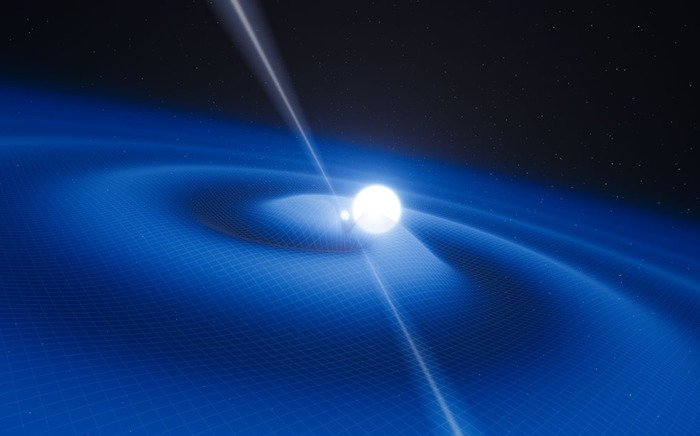This artist's impression shows the exotic double object that consists of a tiny, but very heavy neutron star that spins 25 times each second, orbited every two and a half hours by a white dwarf star. This system is radiating gravitational radiation, ripples in spacetime astronomers on Earth can detect indirectly by measuring the change in the orbit of the system as it loses energy. Credit: ESO/L. Calcada
TORONTO, April 25 (UPI) -- Canadian astronomers say study of a bizarre binary star system show Einstein's theory of relativity holds true even in the most extreme condition ever observed.
"The unusual pair of stars is quite interesting in its own right but we've learned it is also a unique laboratory for testing the limits of one of our most fundamental physical theories, general relativity," University of Toronto astronomy Professor Marten van Kerkwijk, a member of an international research team, said.
The binary system studied is exceptional because of the unique characteristics of each star and their close proximity to each other, a Toronto release said Thursday.
One is a tiny but unusually heavy neutron star, one of the most massive confirmed to date, with gravity more than 300 billion times stronger than that on Earth.
It is orbited by a rather lightweight dwarf star that travels around the neutron star every two and a half hours, an unusually short period.
Astronomers say observation of the pair have detected a significant change in the orbital period of the binary of eight-millionths of a second per year.
Given the masses of the pulsar and the white dwarf, this turns out to match exactly what Einstein's theory predicts should be happening.
Einstein's general theory of relativity says gravity is a consequence of the curvature of space-time created by the presence of mass and energy, and as two stars orbit each other gravitational waves are emitted -- wrinkles moving out in space-time.
As a result, the binary slowly loses energy, the stars move closer, and the orbital period shortens as predicted by Einstein.
The study of the extreme binary system provides "further confidence that Einstein's theory is a good description of nature -- even though we know it is not a complete one, given the unresolved inconsistencies with quantum mechanics," van Kerkwijk said.















